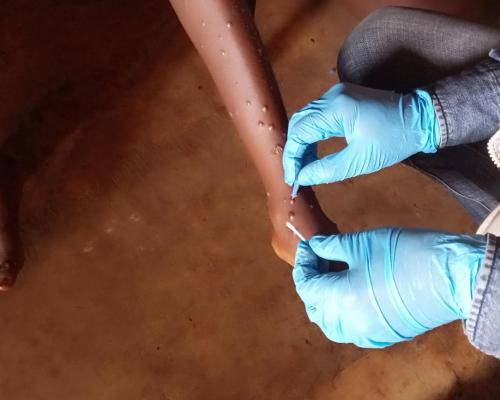Place your adverts here on InfoDig @ low rates; banner ads, sponsored links and guest articles etc. Contact us
Harare, Zimbabwe – Following cabinet’s approval, the Government of Zimbabwe has launched the Health Workforce Strategy (2023-2030) to transform the country’s human resources for health capacity in ensuring the highest quality of life for all Zimbabweans by 2030. This comprehensive strategy addresses critical gaps in the health workforce and is set to be the foundation for a sustainable healthcare system. In conjunction with this strategy, the Government has signed the Health Workforce Compact (2024-2026), underscoring a commitment to accelerate investments in health workforce development and to enhance collaboration across sectors.
Zimbabwe is a pacesetter country in operationalizing the principles of the Africa Health Workforce Investment Charter which admonishes countries to use health labour market evidence to prioritise health workforce investments through national dialogues and formalize the commitments through investment compacts.
“The Signing of the Zimbabwe Health Workforce Investment Compact is a powerful demonstration of Zimbabwe’s commitment to invest in improving the workforce situation in the country. It is a bold step that will contribute to improving the health of the Zimbabwean people.” Said Dr. Matshidiso Moeti WHO Regional Director for Africa.
“I encourage all partners to align with the Compact to amplify our collective impact, tackle infant mortality and infectious diseases, and provide essential services, like vaccinations, to all Zimbabweans,” she added.
The Zimbabwe Health Workforce Strategy outlines five strategic areas that will guide the country’s efforts to strengthen its health workforce: planning and financing; production, training and development; deployment, utilization and governance; retention and migration management as well as monitoring and evaluation, ICT and research.
To enhance the financial sustainability of the health workforce, the strategy aims to improve stakeholder involvement in funding initiatives and increase public sector health workforce spending from $9 per capita to at least $32 per capita by 2030. It also seeks to align investments among government, private sector, and development partners to ensure a sustainable health workforce.
Another critical component of the strategy is training, with the country planning to align health worker training programmes with the needs of the sector and increase annual training outputs from 3,334 in 2022 to at least 7,000 by 2030. Additionally, the strategy emphasizes the need to create 32,000 new health workforce positions, progressively integrate community health workers, foster geographical equity in workforce distribution, and strengthen governance and leadership within the health sector.
To address the issue of health worker retention, the strategy seeks to reduce the attrition rate of health workers by 50% and progressively increase their remuneration. Moreover, efforts will be made to raise health worker satisfaction levels to at least 80% by 2030, alongside managing ethical emigration to ensure experienced health workers remain within the country.
To support these strategic areas, the Health Workforce Investment Compact, developed jointly by the Government and development partners with technical support from the World Health Organization (WHO), outlines critical investment areas necessary to transform the health workforce. The compact aims to accelerate country’s aspiration of attaining a Universal Health Coverage (UHC) service coverage to at least 80 index points and ensure the availability of a resilient, motivated, and fit-for-purpose health workforce.
To realize these ambitious goals, a total investment of US$1.63 billion is needed between 2024 and 2026. An additional US$475 million is required to meet the objectives outlined in the investment compact.
“Through this compact, the Government commits to allocating 75% of the required resources ensuring that these funds are ring fenced, thereby inviting collaborations from development partners ad private sector,” noted Dr Douglas Mombeshora, Honourable Minister of Health and Child Care.
Zimbabwe's healthcare system has been facing challenges in critical areas of human resources for health (HRH), such as quantity, size, absorption of health workers, geographic and health facility level distribution of health workers, skill mix and health workforce management capacity. With an annual average population growth of 1.5% and high burden of communicable and non-communicable diseases, the rising demand for healthcare services has put pressure on available health workforce.












)
)
 English (US) ·
English (US) ·